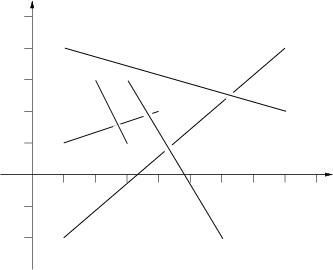- 透视广告流量交易“黑箱”:MergeX是如何实现广告交易链路透明化的?
在数字营销领域,广告流量交易的不透明性一直是行业内外普遍关注的问题。这种不透明性不仅影响了广告主的投放效果,也阻碍了开发者流量变现的潜力。广告流量交易中的“三不”陷阱?一、链路不透明在传统的广告交易链路中,多层中间商如同一道道关卡,截留了本应属于开发者的收益。这种复杂的层级结构使得真实流量价值的溯源变得困难重重,广告主难以准确判断自己的投入是否真正转化为了有效的曝光和点击。二、规则不清晰竞价机制作
- es7-8特性
\光辉岁月/
ecmascriptjavascript开发语言ecmascript
es7新特性Array.prototype.includesIncludes方法用来检测数组中是否包含某个元素,返回布尔类型值。//includesindexof这两个方法都可以实现检查数组是否包含某个元素constmingzhu=["西游记","红楼梦","三国演义","水浒传"];//判断console.log(mingzhu.includes("西游记"));//trueconsole.lo
- python网络安全实战_基于Python网络爬虫实战
weixin_39907850
python网络安全实战
文件的操作:一般都要使用os模块和os.path模块importos.pathos.path.exists('D:\\Python\\1.txt')#判断文件是否存在abspath(path)#返回path所在的绝对路径dirname(p)#返回目录的路径exists(path)#判断文件是否存在getatime(filename)#返回文件的最后访问时间getctime(filename)#返回
- 【LLaMA 3实战】6、LLaMA 3上下文学习指南:从少样本提示到企业级应用实战
无心水
LLaMA3模型实战专栏llamaLLaMA3实战LLaMa3上下文AI入门程序员的AI开发第一课人工智能AI
一、上下文学习(ICL)的技术本质与LLaMA3突破(一)ICL的核心原理与模型机制上下文学习(In-ContextLearning)的本质是通过提示词激活预训练模型的元学习能力,使模型无需微调即可适应新任务。LLaMA3的ICL架构通过以下机制实现突破:任务抽象:从示例中提取输入输出映射规则,如情感分析中的正负向判断模式模式泛化:将规则迁移到新输入,支持跨领域知识迁移动态适应:实时调整注意力分布
- 3 大语言模型预训练数据-3.2 数据处理-3.2.2 冗余去除——2.SimHash算法文本去重实战案例:新闻文章去重场景
SimHash算法文本去重实战案例:新闻文章去重场景一、案例背景与目标二、具体实现步骤与示例1.**待去重文本示例**2.**步骤1:文本预处理与特征提取**3.**步骤2:特征向量化与哈希映射**4.**步骤3:特征向量聚合**5.**步骤4:降维生成SimHash值**6.**步骤5:计算汉明距离与去重判断**三、工程化实现代码(Python简化示例)四、案例总结与优化点一、案例背景与目标假设
- 微调大语言模型后,如何评估效果?一文讲清
茫茫人海一粒沙
人工智能
在做大语言模型(LLM)微调时,“怎么判断模型调得好不好”是必须回答的问题。无论是在研究、项目落地,还是面试中,评估方法都不能停留在“训练loss降了”这么简单。本文从评估目标、技术指标、业务适配、实战建议四个维度,讲清楚微调后的模型评估怎么做,为什么这么做。一,评估前,先搞清楚目标不同的微调目的,评估方式也不同:✅精调任务能力:判断模型是否更好完成分类、问答、摘要、代码生成等任务。✅领域适应:关
- 可达性分析算法Test
ThetaarSofVenice
算法javajvm
可达性分析算法相对于引用计数算法而言,可达性分析算法同样具备实现简单和执行高效等特点,更重要的是,该算法可以有效地解决在引用计数算法中循环引用的问题,防止内存泄漏的发生,这个算法目前较为常用。Java语言选择使用可达性分析算法判断对象是否存活。这种类型的垃圾收集通常叫作追踪性垃圾收集(TracingGarbageCollection),它的基本流程如下。可达性分析算法是以GCRoot(根对象)(见
- 模板函数使用is_same的注意事项
Ethan Wilson
C++c++
在模板函数中使用is_same判断类型的话,编译器会实例化所有路径,即使某些路径在运行时不会被执行。这意味着编译器会检查所有的分支,确保它们都是有效的。例如如果存在从string转为int的路径,即便T为string时不会进入该路径,依旧会编译失败。templatevoidf(){if(is_same::value){Ta=1;}else{Ts="23";//errorC2440:“初始化”:无法
- 左神算法之有序二维矩阵中的目标值查找
岳轩子
左神算法算法矩阵线性代数
有序二维矩阵中的目标值查找目录有序二维矩阵中的目标值查找1.题目描述2.问题解释3.解决思路方法一:逐行二分查找(适合行数较少的情况)方法二:利用行列有序特性(最优解)4.代码实现5.总结1.题目描述给定一个元素为非负整数的二维数组matrix,其中:每一行按照从左到右递增的顺序排列每一列按照从上到下递增的顺序排列再给定一个非负整数aim,请判断aim是否存在于matrix中。示例:int[][]
- 在混乱中做技术决策:AI时代,工程领导者的认知升级指南
java
大家好,这里是架构资源栈!点击上方关注,添加“星标”,一起学习大厂前沿架构!关注、发送C1即可获取JetBrains全家桶激活工具和码!“AI替代不了责任感与判断力。”——GoogleSRE负责人MichelleBrush在InfoQDevSummit的系统思维演讲精要解读在近期的InfoQDevSummitBoston大会上,GoogleSRE工程总监MichelleBrush发表了题为**《H
- Java猜拳小游戏
wp_tao
Java从入门到精通java开发语言
Java猜拳小游戏使用java设计一个猜拳小游戏,要求如下:在控制台提示用户输入出拳结果(1:石头,2:剪刀,3:布)。计算机生成出拳结果。裁判判断出拳结果。输出游戏结果。com.game.Judge.java。packagecom.game;publicclassJudge{privateintplayer1;//选手一的出拳结果:1为石头,2为剪刀,3为布
- Flask(四) 模板渲染render_template
@昵称不存在
Flaskflaskpython后端
文章目录过程详解(路由HTML模板)数据是怎么传过去的?多变量示例✅Jinja2支持条件判断、循环、模板继承:✅安全性Flask默认也会对变量进行HTML转义:{{chart|safe}}在pyecharts中怎么用?模板继承文件结构示例base.html(母板模板)index.html(子模板)login.html(子模板)过滤器宏和模板包含Flask-Login登录系统1、安装Flask-Lo
- Redis布隆过滤器详解
枸杞配码
redis数据库缓存
1.布隆过滤器是什么redis的布隆过滤器其实有点像我们之前学习过的hyperloglog深入理解redis——新类型bitmap/hyperloglgo/GEO,它也是不保存元素的一个集合,它也不保存元素的具体内容,但是能判定这个元素是否在这个集合中存在(hyperloglog是判定集合中存在的不重复元素的个数)。1)它是由一个初值都为零的bit数组和多个哈希函数构成,用来快速判断某个数据是否存
- 《网络安全自学教程》- SQL注入漏洞详解
士别三日wyx
《网络安全自学教程》sql数据库网络安全安全web安全
《网络安全自学教程》SQL注入的原理其实很简单:由于后端过滤不严格,把用户输入的数据当成SQL语句执行了。SQL注入1、SQL注入常出现在哪些功能?2、SQL注入危害3、SQL注入分类4、判断是否存在SQL注入5、SQL注入方式6、SQL注入防御6.1、预编译1、SQL注入常出现在哪些功能?凡是涉及「数据库操作的功能」,都有可能存在SQL注入,比如:搜索框等查询功能。用户注册/用户登录功能。密码找
- GESP认证C++编程真题解析 | GESP202409 三级 单选题和判断题
热爱编程的通信人
历年GESPCSP-JCSP-S真题解析c++开发语言
欢迎大家订阅我的专栏:算法题解:C++与Python实现!本专栏旨在帮助大家从基础到进阶,逐步提升编程能力,助力信息学竞赛备战!专栏特色1.经典算法练习:根据信息学竞赛大纲,精心挑选经典算法题目,提供清晰的代码实现与详细指导,帮助您夯实算法基础。2.系统化学习路径:按照算法类别和难度分级,从基础到进阶,循序渐进,帮助您全面提升编程能力与算法思维。适合人群:准备参加蓝桥杯、GESP、CSP-J、CS
- 从决策树到随机森林:Python机器学习里的“树形家族“深度实战与原理拆解
小张在编程
机器学习决策树随机森林
引言在机器学习的算法森林中,有一对"树形兄弟"始终占据着C位——决策树像个逻辑清晰的"老教授",用可视化的树状结构把复杂决策过程拆解成"是/否"的简单判断;而它的进阶版随机森林更像一支"精英军团",通过多棵决策树的"投票表决",在准确性与抗过拟合能力上实现了质的飞跃。无论是医疗诊断中的疾病预测,还是金融风控里的违约判别,这对组合都用强大的适应性证明着自己的"算法常青树"地位。今天,我们就从原理到实
- 【第二章:机器学习与神经网络概述】03.类算法理论与实践-(3)决策树分类器
IT古董
人工智能课程机器学习算法神经网络
第二章:机器学习与神经网络概述第三部分:类算法理论与实践第三节:决策树分类器内容:信息增益、剪枝技术、过拟合与泛化能力。决策树是一种常用于分类和回归的树状结构模型,它通过一系列特征判断进行决策,有良好的可解释性。一、基本概念节点(Node):表示特征判断条件边(Branch):表示特征判断的结果路径叶子节点(Leaf):表示分类结果二、划分准则:信息增益(InformationGain)信息增益衡
- spring05-Spring核心:AOP面向切面编程
ruleslol
springspring
一、什么是AOP?AOP是为了解决“横切关注点”问题的一种编程范式。在一个项目中,有很多功能不是业务核心逻辑,但又会反复出现在多个地方,例如:日志记录权限校验登录状态检查统计耗时异常处理这些逻辑与“业务方法”不在一个维度上,但又必须“附着在”业务方法上。AOP就是用来把这些“通用功能”抽出来,统一管理和复用的。1、案例背景有一个登录流程,希望在不修改源代码的情况下,添加权限判断模块,使得用户在校验
- Collection的子接口之【List】
丶小鱼丶
Java集合框架list数据结构
目录List自身提供了和index相关的方法List的特点List的常见实现类ArrayList底层数据结构是数组懒加载的体现最大容量为int类型的最大值扩容机制使用equals方法来判断是否包含某个元素随机增删元素效率较低,需要移动元素,时间复杂度为O(n)LinkedList底层数据结构是双向链表add(Ee)和remove()方法获取元素需要遍历节点,效率较低,时间复杂度为O(n)随机增删元
- 腾讯社招前端面经(成都)
本人经验是1.8年,拉钩投递,分享面经用于学习,大家可供参考~面试流程电话面同事面组长面部长面电话面首先会接到一个面试官的电话,问一些简单的问题,简单确认是否水平真实,没有录音,记不到什么了~过了才有线下面试机会(网上说这个只是来简单判断简历是否有水分,所以如果经历正常下能过滴~)。自我介绍上家公司业务、规模项目中遇到的最大挑战react与vue的区别离职原因同事面电话面过了的话,差不多三个工作日
- 【C++】实验八
会的全对٩(ˊᗜˋ*)و
C++c++开发语言经验分享
题目:1、求面积,输入底和高,输出三角形的面积,循环上述输入输出过程,直到输入为负数时,程序输出“结束”。思路:写一个循环,输入为负时跳出,在循环内输入底和高输出三角形面积2、输出1000以内,能被2,7,9任意两个整除的数。每行输出5个。思路:用for循环来取出每一个数,再用逻辑表达式来分别判断3、输出两个数(含这两个数)之间所有奇数的和思路:需要两个由键盘输入的变量当作范围,用逻辑表达式进行判
- 接口测试-第03天(Postman断言、关联、参数化)
粥小铭同学
接口测试postman测试工具
Postman断言Postman断言简介让Postman工具代替人工自动判断预期结果和实际结果是否一致断言代码书写在Tests标签页中。查看断言结果TestResults标签页Poatman常用断言1.断言响应状态码Statuscode:Codeis200//断言响应状态码为200pm.test("Statuscodeis200",function(){pm.response.to.hava.st
- 微调大语言模型(生成任务),怎么评估它到底“变好”了?
茫茫人海一粒沙
语言模型人工智能自然语言处理
随着大语言模型(如GPT、LLaMA)的广泛应用,越来越多团队开始基于它们做微调,定制符合自己业务需求的模型。微调虽能让模型更贴合任务,但评估是否真的“变好”却不是简单的事。本文将系统介绍微调过程中和微调完成后,如何科学有效地评估模型效果,帮助你用对指标,做出准确判断。一、微调时的评估:关注训练过程中的模型表现1.验证集Loss(ValidationLoss)微调训练时,我们会准备一部分数据作为验
- 【学习】《算法图解》第六章学习笔记:广度优先搜索
自学也学好编程
程序人生
前言《算法图解》第六章为我们介绍了一种基础且强大的图搜索算法——**广度优先搜索(Breadth-FirstSearch,BFS)**。这种算法能够系统地探索图中的节点,常用于解决两类核心问题:一是判断从一个节点到另一个节点是否存在路径;二是在无权图中找到两个节点之间的最短路径。本笔记将深入探讨图的基本概念、BFS的工作原理、其实现方式以及相关的性能分析。一、图(Graph)简介在讨论BFS之前,
- 字符判断星期几
伊欧温
C语言刷题记录c语言算法
题目描述请输入星期几的第一个字母来判断一下是星期几,如果第一个字母一样,则继续判断第二个字母。程序分析:用情况语句比较好,如果第一个字母一样,则判断用情况语句或if语句判断第二个字母。源代码#includeintmain(){chari,j;printf("请输入第一个字母:\n");scanf("%c",&i);//为避免影响后续可能的输入操作,用getchar()读取并丢弃这个换行符getch
- php 获取一年中的节假日,PHP开发节假日时间表
吴敬欣
php获取一年中的节假日
无意中发现一个节假日的API接口:http://timor.tech/api/holiday/year这个接口实现起来其实很简单,而且一年只需要维护一次,想要自己实现这个接口可参考博主之前写的这篇文章PHP判断某个日期是否为工作日使用这个接口可以更简单快速的写一个“节假日时间表”,例如博主写的代码:$row){if(!$row['holiday']){continue;}if(mb_strpos(
- AI表格数据分析
简单发一篇文章,最近看到AI数据分析是越来越火了哈,把简单的流程进行一次简要的分享。AI数据分析的本质,是“结构化数据→模式识别→可视化表达+洞察输出”。1、分析流程详解:(1)数据预处理什么是数据预处理呢?其实它可以理解成你给的是什么。步骤1:识别数据结构表头,字段的含义等。步骤2:清洗数据去除空值、格式错误、重复数据。步骤3:类型识别判断哪些是时间字段?哪些是数值型?哪些是分类字段?总结:类似
- keep-alive实现原理及Vue2/Vue3对比分析
年纪轻轻就扛不住
VUEvue.js前端javascript
一、keep-alive基本概念keep-alive是Vue的内置组件,用于缓存组件实例,避免重复渲染。它具有以下特点:抽象组件:自身不会渲染DOM,也不会出现在父组件链中包裹动态组件:缓存不活动的组件实例,而不是销毁它们生命周期:提供activated和deactivated钩子函数二、keep-alive核心实现原理1.基本工作流程判断当前组件是否需要缓存生成组件唯一key缓存组件实例在被包裹
- python 获取节假日
AI算法网奇
python宝典
www.easybots.cn是不准的,不能用,比如20190913,不能判断节假日#-*-coding:utf-8-*-importjsonimporturllib.requestimporttimeimportdatetimedefa1(date_str):server_url="http://api.goseek.cn/Tools/holiday?date="#server_url="htt
- DTO、VO、POJO转换性能测试
ZuuuuYao
Java开发语言java
PO、DTO、VO、BO对象转换性能测试一、Java对象转换性能测试(一)测试对象mapstruct(二)测试对象modelmapper二测试代码(1)准备UserEntity(2)准备UserVO(3)编写mapstruct的映射器UserStructMapper(4)准备测试类(5)输出结果三、测试报告四、结论一、Java对象转换性能测试(一)测试对象mapstructMapstruct是一个
- HttpClient 4.3与4.3版本以下版本比较
spjich
javahttpclient
网上利用java发送http请求的代码很多,一搜一大把,有的利用的是java.net.*下的HttpURLConnection,有的用httpclient,而且发送的代码也分门别类。今天我们主要来说的是利用httpclient发送请求。
httpclient又可分为
httpclient3.x
httpclient4.x到httpclient4.3以下
httpclient4.3
- Essential Studio Enterprise Edition 2015 v1新功能体验
Axiba
.net
概述:Essential Studio已全线升级至2015 v1版本了!新版本为JavaScript和ASP.NET MVC添加了新的文件资源管理器控件,还有其他一些控件功能升级,精彩不容错过,让我们一起来看看吧!
syncfusion公司是世界领先的Windows开发组件提供商,该公司正式对外发布Essential Studio Enterprise Edition 2015 v1版本。新版本
- [宇宙与天文]微波背景辐射值与地球温度
comsci
背景
宇宙这个庞大,无边无际的空间是否存在某种确定的,变化的温度呢?
如果宇宙微波背景辐射值是表示宇宙空间温度的参数之一,那么测量这些数值,并观测周围的恒星能量输出值,我们是否获得地球的长期气候变化的情况呢?
&nbs
- lvs-server
男人50
server
#!/bin/bash
#
# LVS script for VS/DR
#
#./etc/rc.d/init.d/functions
#
VIP=10.10.6.252
RIP1=10.10.6.101
RIP2=10.10.6.13
PORT=80
case $1 in
start)
/sbin/ifconfig eth2:0 $VIP broadca
- java的WebCollector爬虫框架
oloz
爬虫
WebCollector主页:
https://github.com/CrawlScript/WebCollector
下载:webcollector-版本号-bin.zip将解压后文件夹中的所有jar包添加到工程既可。
接下来看demo
package org.spider.myspider;
import cn.edu.hfut.dmic.webcollector.cra
- jQuery append 与 after 的区别
小猪猪08
1、after函数
定义和用法:
after() 方法在被选元素后插入指定的内容。
语法:
$(selector).after(content)
实例:
<html>
<head>
<script type="text/javascript" src="/jquery/jquery.js"></scr
- mysql知识充电
香水浓
mysql
索引
索引是在存储引擎中实现的,因此每种存储引擎的索引都不一定完全相同,并且每种存储引擎也不一定支持所有索引类型。
根据存储引擎定义每个表的最大索引数和最大索引长度。所有存储引擎支持每个表至少16个索引,总索引长度至少为256字节。
大多数存储引擎有更高的限制。MYSQL中索引的存储类型有两种:BTREE和HASH,具体和表的存储引擎相关;
MYISAM和InnoDB存储引擎
- 我的架构经验系列文章索引
agevs
架构
下面是一些个人架构上的总结,本来想只在公司内部进行共享的,因此内容写的口语化一点,也没什么图示,所有内容没有查任何资料是脑子里面的东西吐出来的因此可能会不准确不全,希望抛砖引玉,大家互相讨论。
要注意,我这些文章是一个总体的架构经验不针对具体的语言和平台,因此也不一定是适用所有的语言和平台的。
(内容是前几天写的,现附上索引)
前端架构 http://www.
- Android so lib库远程http下载和动态注册
aijuans
andorid
一、背景
在开发Android应用程序的实现,有时候需要引入第三方so lib库,但第三方so库比较大,例如开源第三方播放组件ffmpeg库, 如果直接打包的apk包里面, 整个应用程序会大很多.经过查阅资料和实验,发现通过远程下载so文件,然后再动态注册so文件时可行的。主要需要解决下载so文件存放位置以及文件读写权限问题。
二、主要
- linux中svn配置出错 conf/svnserve.conf:12: Option expected 解决方法
baalwolf
option
在客户端访问subversion版本库时出现这个错误:
svnserve.conf:12: Option expected
为什么会出现这个错误呢,就是因为subversion读取配置文件svnserve.conf时,无法识别有前置空格的配置文件,如### This file controls the configuration of the svnserve daemon, if you##
- MongoDB的连接池和连接管理
BigCat2013
mongodb
在关系型数据库中,我们总是需要关闭使用的数据库连接,不然大量的创建连接会导致资源的浪费甚至于数据库宕机。这篇文章主要想解释一下mongoDB的连接池以及连接管理机制,如果正对此有疑惑的朋友可以看一下。
通常我们习惯于new 一个connection并且通常在finally语句中调用connection的close()方法将其关闭。正巧,mongoDB中当我们new一个Mongo的时候,会发现它也
- AngularJS使用Socket.IO
bijian1013
JavaScriptAngularJSSocket.IO
目前,web应用普遍被要求是实时web应用,即服务端的数据更新之后,应用能立即更新。以前使用的技术(例如polling)存在一些局限性,而且有时我们需要在客户端打开一个socket,然后进行通信。
Socket.IO(http://socket.io/)是一个非常优秀的库,它可以帮你实
- [Maven学习笔记四]Maven依赖特性
bit1129
maven
三个模块
为了说明问题,以用户登陆小web应用为例。通常一个web应用分为三个模块,模型和数据持久化层user-core, 业务逻辑层user-service以及web展现层user-web,
user-service依赖于user-core
user-web依赖于user-core和user-service
依赖作用范围
Maven的dependency定义
- 【Akka一】Akka入门
bit1129
akka
什么是Akka
Message-Driven Runtime is the Foundation to Reactive Applications
In Akka, your business logic is driven through message-based communication patterns that are independent of physical locatio
- zabbix_api之perl语言写法
ronin47
zabbix_api之perl
zabbix_api网上比较多的写法是python或curl。上次我用java--http://bossr.iteye.com/blog/2195679,这次用perl。for example: #!/usr/bin/perl
use 5.010 ;
use strict ;
use warnings ;
use JSON :: RPC :: Client ;
use
- 比优衣库跟牛掰的视频流出了,兄弟连Linux运维工程师课堂实录,更加刺激,更加实在!
brotherlamp
linux运维工程师linux运维工程师教程linux运维工程师视频linux运维工程师资料linux运维工程师自学
比优衣库跟牛掰的视频流出了,兄弟连Linux运维工程师课堂实录,更加刺激,更加实在!
-----------------------------------------------------
兄弟连Linux运维工程师课堂实录-计算机基础-1-课程体系介绍1
链接:http://pan.baidu.com/s/1i3GQtGL 密码:bl65
兄弟连Lin
- bitmap求哈密顿距离-给定N(1<=N<=100000)个五维的点A(x1,x2,x3,x4,x5),求两个点X(x1,x2,x3,x4,x5)和Y(
bylijinnan
java
import java.util.Random;
/**
* 题目:
* 给定N(1<=N<=100000)个五维的点A(x1,x2,x3,x4,x5),求两个点X(x1,x2,x3,x4,x5)和Y(y1,y2,y3,y4,y5),
* 使得他们的哈密顿距离(d=|x1-y1| + |x2-y2| + |x3-y3| + |x4-y4| + |x5-y5|)最大
- map的三种遍历方法
chicony
map
package com.test;
import java.util.Collection;
import java.util.HashMap;
import java.util.Iterator;
import java.util.Map;
import java.util.Set;
public class TestMap {
public static v
- Linux安装mysql的一些坑
chenchao051
linux
1、mysql不建议在root用户下运行
2、出现服务启动不了,111错误,注意要用chown来赋予权限, 我在root用户下装的mysql,我就把usr/share/mysql/mysql.server复制到/etc/init.d/mysqld, (同时把my-huge.cnf复制/etc/my.cnf)
chown -R cc /etc/init.d/mysql
- Sublime Text 3 配置
daizj
配置Sublime Text
Sublime Text 3 配置解释(默认){// 设置主题文件“color_scheme”: “Packages/Color Scheme – Default/Monokai.tmTheme”,// 设置字体和大小“font_face”: “Consolas”,“font_size”: 12,// 字体选项:no_bold不显示粗体字,no_italic不显示斜体字,no_antialias和
- MySQL server has gone away 问题的解决方法
dcj3sjt126com
SQL Server
MySQL server has gone away 问题解决方法,需要的朋友可以参考下。
应用程序(比如PHP)长时间的执行批量的MYSQL语句。执行一个SQL,但SQL语句过大或者语句中含有BLOB或者longblob字段。比如,图片数据的处理。都容易引起MySQL server has gone away。 今天遇到类似的情景,MySQL只是冷冷的说:MySQL server h
- javascript/dom:固定居中效果
dcj3sjt126com
JavaScript
<!DOCTYPE html PUBLIC "-//W3C//DTD XHTML 1.0 Transitional//EN" "http://www.w3.org/TR/xhtml1/DTD/xhtml1-transitional.dtd">
<html xmlns="http://www.w3.org/1999/xhtml&
- 使用 Spring 2.5 注释驱动的 IoC 功能
e200702084
springbean配置管理IOCOffice
使用 Spring 2.5 注释驱动的 IoC 功能
developerWorks
文档选项
将打印机的版面设置成横向打印模式
打印本页
将此页作为电子邮件发送
将此页作为电子邮件发送
级别: 初级
陈 雄华 (
[email protected]), 技术总监, 宝宝淘网络科技有限公司
2008 年 2 月 28 日
&nb
- MongoDB常用操作命令
geeksun
mongodb
1. 基本操作
db.AddUser(username,password) 添加用户
db.auth(usrename,password) 设置数据库连接验证
db.cloneDataBase(fromhost)
- php写守护进程(Daemon)
hongtoushizi
PHP
转载自: http://blog.csdn.net/tengzhaorong/article/details/9764655
守护进程(Daemon)是运行在后台的一种特殊进程。它独立于控制终端并且周期性地执行某种任务或等待处理某些发生的事件。守护进程是一种很有用的进程。php也可以实现守护进程的功能。
1、基本概念
&nbs
- spring整合mybatis,关于注入Dao对象出错问题
jonsvien
DAOspringbeanmybatisprototype
今天在公司测试功能时发现一问题:
先进行代码说明:
1,controller配置了Scope="prototype"(表明每一次请求都是原子型)
@resource/@autowired service对象都可以(两种注解都可以)。
2,service 配置了Scope="prototype"(表明每一次请求都是原子型)
- 对象关系行为模式之标识映射
home198979
PHP架构企业应用对象关系标识映射
HELLO!架构
一、概念
identity Map:通过在映射中保存每个已经加载的对象,确保每个对象只加载一次,当要访问对象的时候,通过映射来查找它们。其实在数据源架构模式之数据映射器代码中有提及到标识映射,Mapper类的getFromMap方法就是实现标识映射的实现。
二、为什么要使用标识映射?
在数据源架构模式之数据映射器中
//c
- Linux下hosts文件详解
pda158
linux
1、主机名: 无论在局域网还是INTERNET上,每台主机都有一个IP地址,是为了区分此台主机和彼台主机,也就是说IP地址就是主机的门牌号。 公网:IP地址不方便记忆,所以又有了域名。域名只是在公网(INtERNET)中存在,每个域名都对应一个IP地址,但一个IP地址可有对应多个域名。 局域网:每台机器都有一个主机名,用于主机与主机之间的便于区分,就可以为每台机器设置主机
- nginx配置文件粗解
spjich
javanginx
#运行用户#user nobody;#启动进程,通常设置成和cpu的数量相等worker_processes 2;#全局错误日志及PID文件#error_log logs/error.log;#error_log logs/error.log notice;#error_log logs/error.log inf
- 数学函数
w54653520
java
public
class
S {
// 传入两个整数,进行比较,返回两个数中的最大值的方法。
public
int
get(
int
num1,
int
nu

